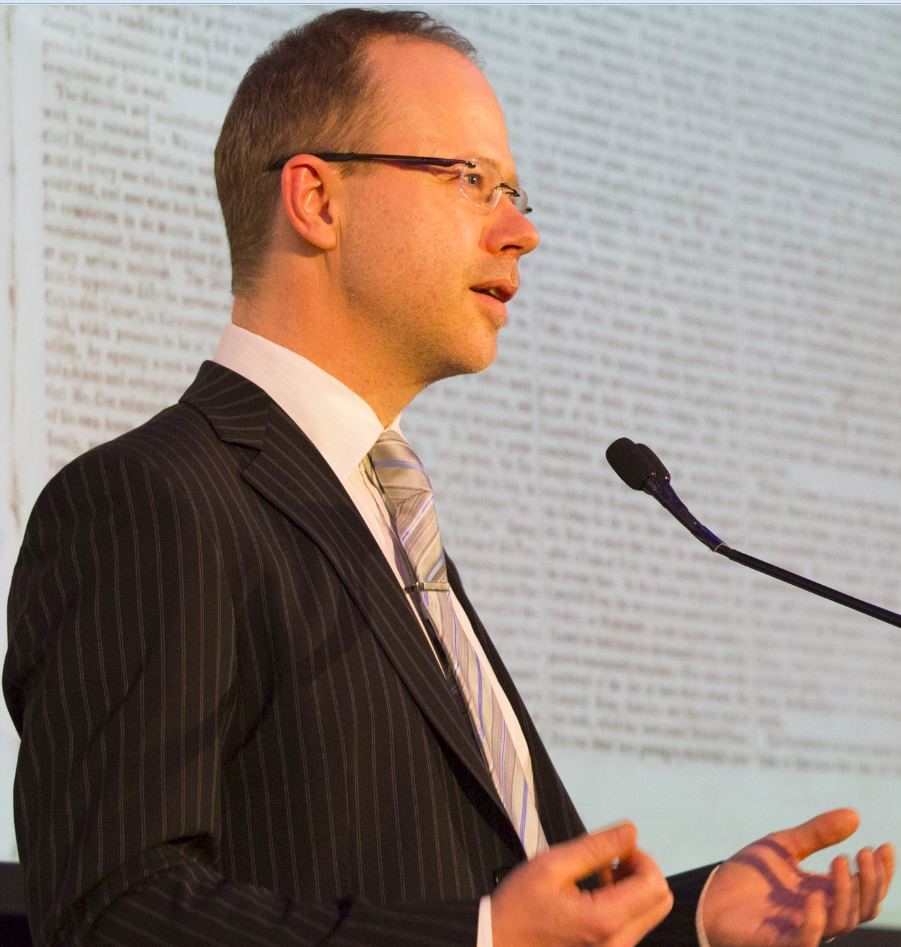Exploration & Endeavour: The Royal Society of London and the South Seas celebrates the society’s 350th anniversary by bringing together a selection of iconic objects and original documents that highlight the society’s key role in European maritime exploration and discovery in the Pacific. The Royal Society, the world’s oldest scientific academy in continuous existence, was founded on the premise that knowledge should be subject to independent verification—‘freeing oneself from unexamined opinion, particularly through the study of empirical data’, as Andrew Sayers puts it in his introduction to the beautifully produced accompanying book publication. The society’s motto, Nullius in verba (‘Take no-one’s word for it’), attests to this commitment to independence of thought, underpinned by methodologically rigorous inquiry. Fellows of the society include larger-than-life figures who in many cases have revolutionised their field: Isaac Newton, Michael Faraday, Christopher Wren, Charles Darwin, Ernest Rutherford, Albert Einstein, Dorothy Hodgkin, Francis Crick, James Watson, Stephen Hawking and, with particular relevance in the Pacific context, James Cook and Joseph Banks.
Although this is an anniversary exhibition it does not attempt to document the history of the Royal Society, whose great achievers have been responsible for discoveries and inventions as diverse as ‘champagne and gravity, evolution and the electron, the double helix and the internet’. Instead it uses the South Seas theme to illuminate a fascinating strand of that history by focusing on an assortment of artefacts that characterise the era of antipodean exploration. Many of the items on display are remarkable in that they represent truly transformational technologies that changed the way humans could navigate, view, measure and comprehend the world.
At the heart of the exhibition are 21 objects from the Royal Society: 14 documents of various kinds including lists, letters, certificates and other papers; five instruments: an astronomical quadrant, an orrery modelling the Transit of Venus, a regulator and two chronometers; a miniature portrait of Cook; and a bronze version of the Royal Society Cook medal. This array is complemented by five items from the National Museum of Australia: three reproduced colour plates from Banks’ Florilegium; a cannon from HMB Endeavour; and a magnifying glass once owned by astronomer William Bayly. The Australian Institute of Marine Science (a supporter of the exhibition) has provided a coral core sample showing coral growth from 1708 to 1992, taken from Flinders Reef in the Coral Sea. Assembled together in one space, these disparate items are powerfully evocative of an alluring history of voyaging into the unknown in search of the elusive ‘Great South Land’ at the height of Europe’s age of exploration.
Among the many gems in this exhibition are written pieces: Lawrence Rooke’s ‘Directions for sea-men bound for far voyages’ (1661), Cook’s letter to Sir John Pringle (5 March 1776) describing how he ensured the health of his crew, Sir Everard Home’s ‘Description of the anatomy of the platypus’ (1801), Matthew Flinders’ letter to Joseph Banks (30 June 1805) outlining the impact of compass variation caused by magnetic interference (a theory he was the first to formulate during his survey of the coast of Australia), and the first meteorological records for New South Wales, which were only discovered in the Royal Society’s collections in 1977.
[extract]
Arthur, Paul Longley. Review of museum exhibition Exploration & Endeavour: The Royal Society of London and the South Seas, curated by Michelle Hetherington, National Museum of Australia, Canberra, 15 Sept 2010–6 Feb 2011. ReCollections: The Journal of the National Museum of Australia 6, no.1 (2011): http://recollections.nma.gov.au/issues/
vol_6_no_1/exhibition_reviews/exploration_and_endeavour.






